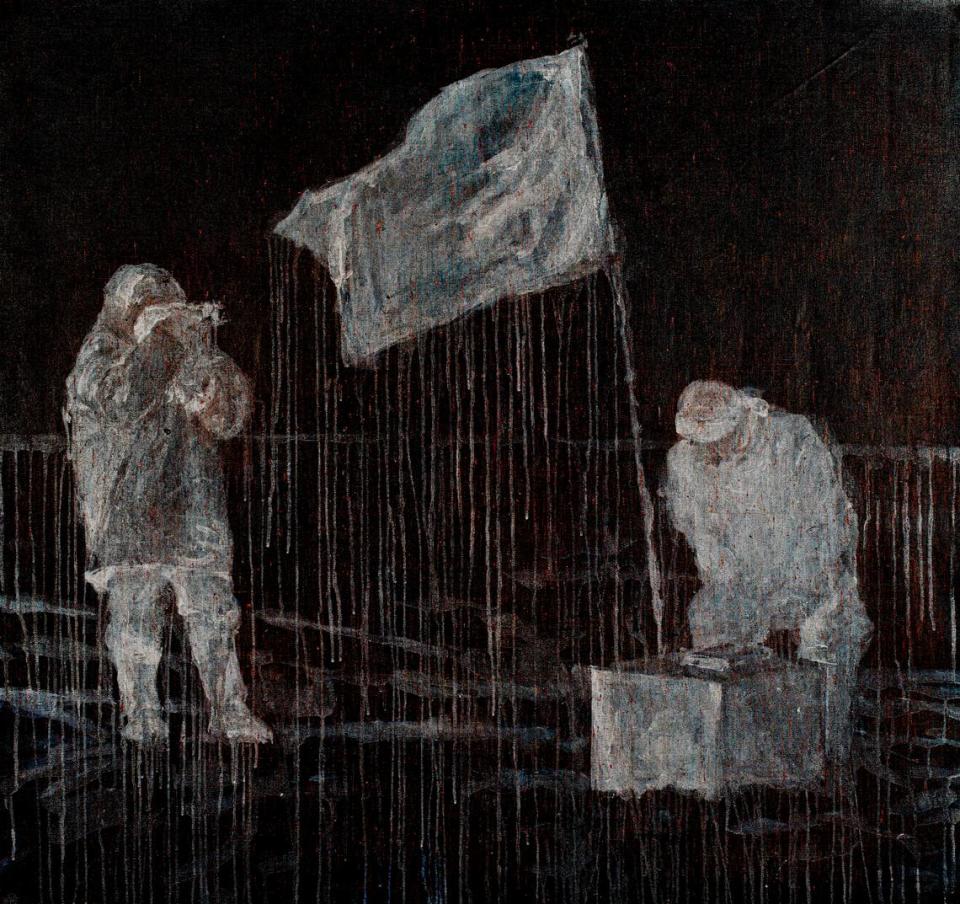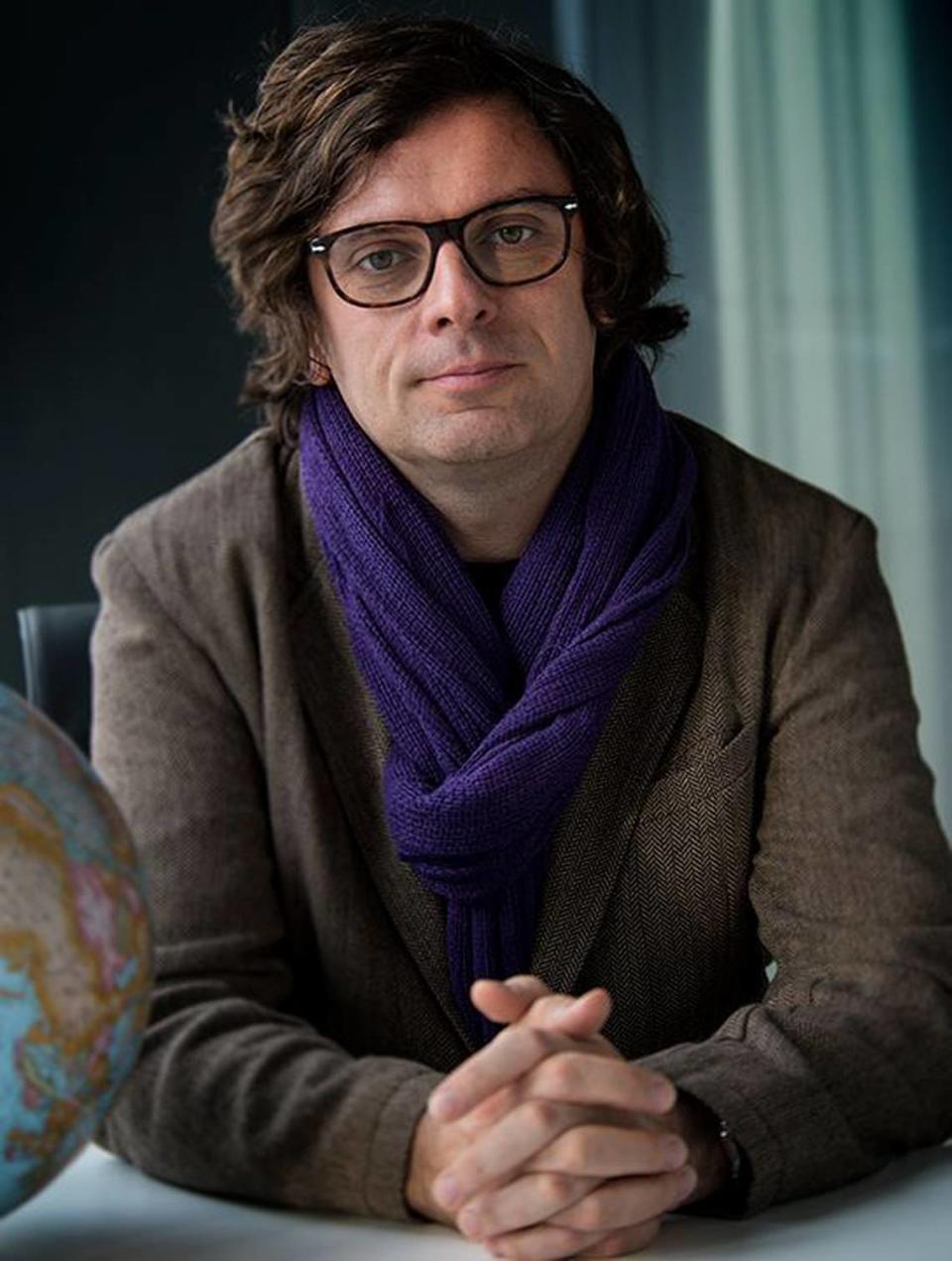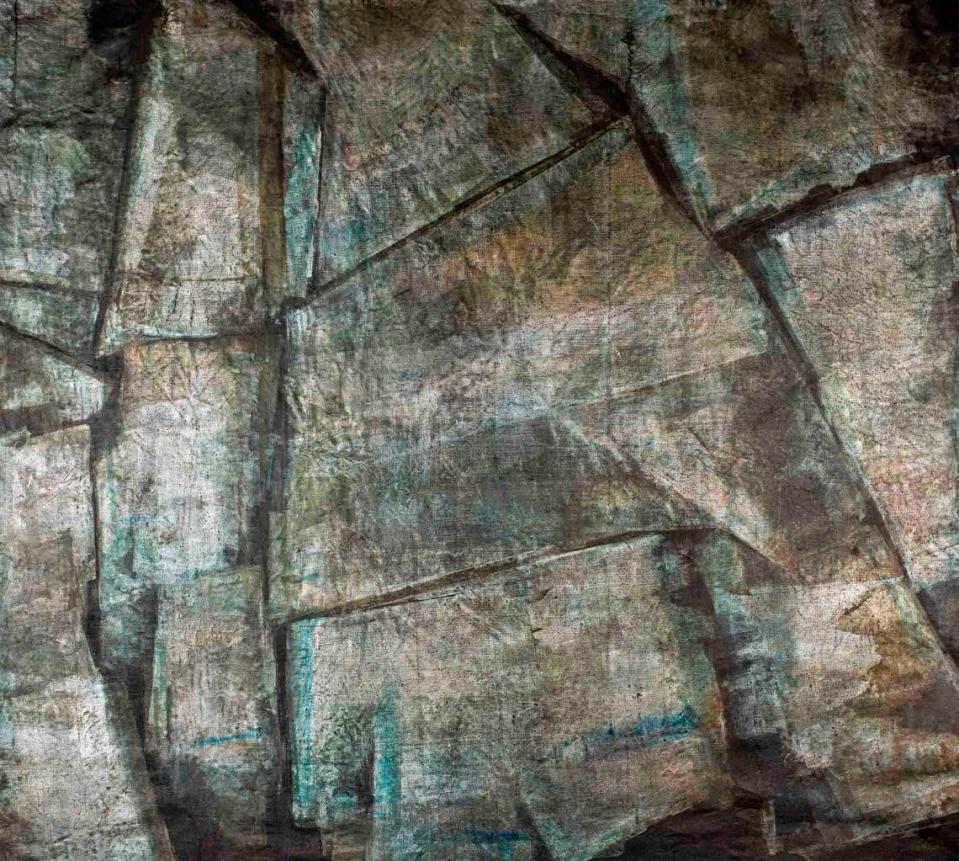UNCC professor works to translate climate research on rocks into art and understanding
In March, multimedia artist and UNC Charlotte associate professor Marek Ranis spent 12 days in eastern California in the remote reaches of the Sierra Nevadas, deep within the boulders
He was working alongside colleague and geologist Martha Cary “Missy” Eppes on the first leg of a research project examining how climate affects the cracking and weathering of rocks.
Funded by a National Science Foundation grant, Ranis was sent to document the experience and findings as the project’s artist in residence.
Eppes said the work’s practical implication is that buildings and monuments are constructed from these rocks. Understanding the rate of breakdown is important. But for work that can seem esoteric at best, communicating value and understanding beyond the classroom is key. That’s where Ranis comes in.

“It’s almost a spiritual, mystical understanding of how the rock erodes, and how it’s changing its state,” Ranis said. “We are looking to expand the possibility of disseminating research and making it more accessible to people.”
His artistic contribution, called “Subcritical,” will incorporate drone photography, a semi-documentary film, digital prints on aluminum and sculpture, all inspired by the rock fragments.
“We, as geologists, are interested in rates of processes — how rocks break down and how that changes over time,” said Eppes, who leads the project with UNCC colleague and mechanical engineering professor Russ Keanini, accompanied by a crop of graduate students.
Eppes described a conversation while in the field one day: “Marek turned to me and said, Missy, “Subcritical” is God. We had an amazing conversation about how, without rock fracture, you don’t have the sediment and soil that makes life on the planet.
“The break up of rock contributes to the evolution of life and the very essence of who we are as humans,” she added. “I’ve already used that story to explain what I do to geologists and non-geologists.”
Engaging an artist in scientific inquiry is a novel collaboration.
“It’s such a great opportunity (for) someone to be the communicator between the scientists and the public, to speak to the greater importance of the work,” she said.

Digging in
Before joining the team out west, Ranis sat in on many of Eppes’ lectures.
Once out in the field, he had a lot of questions. “Having him in the field added a level of freshness to the process of collecting data,” Eppes said. “It forced us all to be able to speak to what we’re doing in the most basic of terms.”
When they returned from the initial expedition, Ranis got to work. Then, COVID-19 delayed a subsequent research trip to Israel.
“Our communication, whether in person or going places, is slowly diminishing, and I knew I needed to make something physical, something which (would) remain proof that this time passed,” Ranis said of the coronavirus shutdown.

Seven large paintings on linen depicting the cracking and weathering of boulders — his “Liminal” series — was on view virtually at Toshkova Fine Art Advisory in July, and in August, he joined the founding dean of UNCC’s College of Arts + Architecture, Ken Lambla, for a “Creative Shifts” online discussion at the McColl Center, where Ranis is an alumnus.
“The pace of art versus science is fascinating,” Eppes said. “We are scratching the surface on data, and he’s completed this entire body of work.”
Art with purpose
Ranis is no stranger to the marriage of art and science.
His prolific work, spanning two decades, in large part examines the effect of climate change on the Arctic north. He has spent time researching in Alaska, Greenland and Norway, among other places globally.
Since 2003, much of his work has centered on an artistic and research project called “Albedo,” focusing on global climate change and the Anthropocene era.
Ranis’ diverse experience — growing up Warsaw, Poland, under Communist rule, working with indigenous populations in Norway and Alaska, spending time in South Africa at the end of apartheid and living through social justice issues facing his home in the American South today — all contribute to his wide-ranging perspective.
“I’ve seen many different realities, and there’s a tremendous gap in addressing important issues of our time,” he said. “Artists fill those roles and engage (them). They play a much larger role than just decorating our world.”
Locally, Ranis was one of two lead artists who, in 2007, brought art to the corridor bridges and retaining walls of the light rail stations from Woodlawn Road to Interstate 485. For that project, Ranis pulled inspiration from nature, including earth tones and incorporating textures and colors of Charlotte’s sky and trees.
In 2017, in recognition of his work in the Arctic, the Anchorage Museum in Alaska appointed him curator.
His film, ”Like Shishmaref”, which was on display at The Mint Museum from 2016-18, showcases portraits of the vanishing coastline on both Alaska’s Sarichef barrier island and those on North Carolina’s Outer Banks.
Grants, fellowships and residencies, including UNESCO Aschberg Fellowship, American-Scandinavian Foundation Grant, and NC Artist Fellowship Award followed suit, and he is part of a team that received a State Department grant for work between Alaska and Russia.
“We, as humans, are making an impact on the environment beyond what we have now an understanding of,” Ranis said. “These are profound and dramatic findings, which I hope, with my work, will connect with much larger than the scientific audience.”
More arts coverage
Want to see more stories like this? You can join our Facebook group, “Inside Charlotte Arts,” at https://www.facebook.com/groups/insidecharlottearts/
You can find all of our arts season preview stories in one place: https://www.charlotteobserver.com/topics/charlotte-fall-arts-2020

